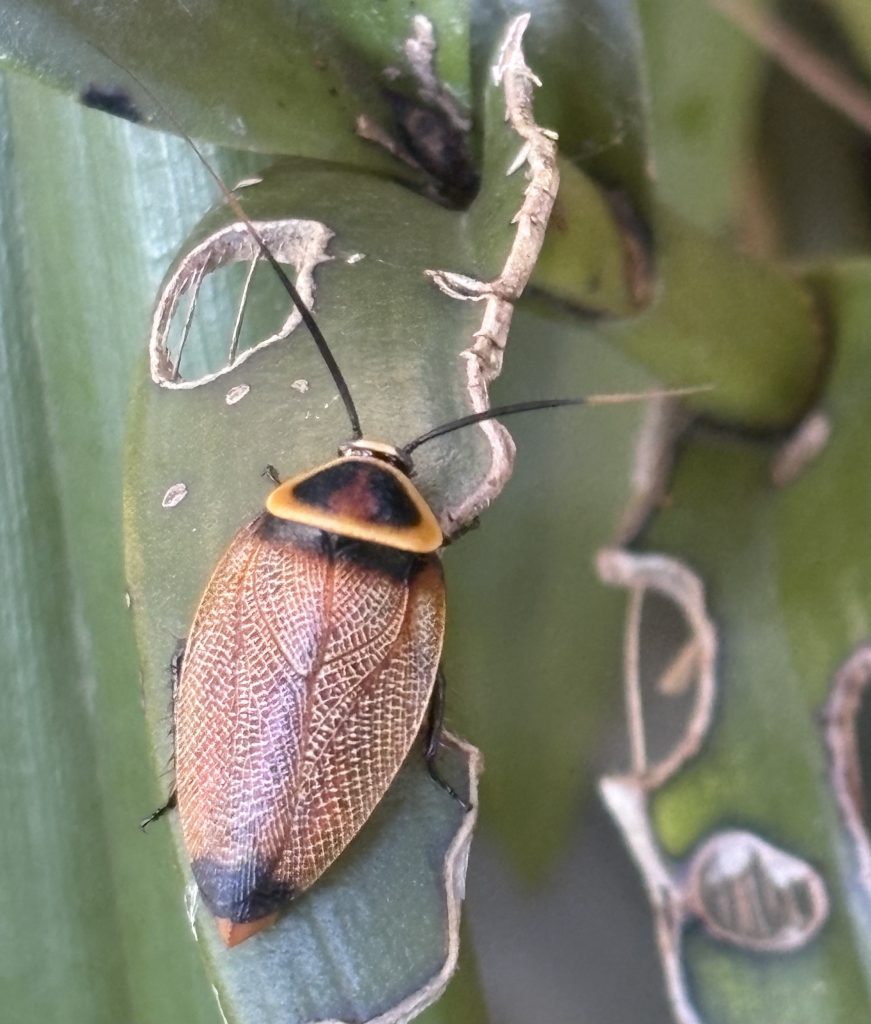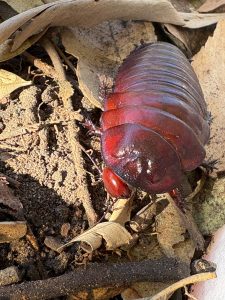26 Orders of Insects: Blattodea

Order Blattodea: Cockroaches and termites
Until recently, Order Isoptera (termites) was a valid order of insects. However, phylogenetic and other analyses has shown that the termites sit within Order Blattodea. This created a problem (see Inward D, Beccaloni G, Eggleton P. 2007. Death of an Order: a comprehensive molecular phylogenetic study confirms that termites are eusocial cockroaches. Biol. Lett. 2007;3:331–335) because the proposal to give Isoptera family level caused additional problems. At the moment, we can treat termites as “higher taxon Termitoidae’ within Blattodea (according to the Australian Faunal Directory) and are considered to be eusocial cockroaches (see also: Save Isoptera, written by Nathan Lo at the University of Sydney with others ).
Renaming of existing groups or species when new data comes available is a controversial area and causes many disagreements among scientists. There are rules that scientists must use when changing names (see Chapter 2).

Blattodea (cockroaches)
Blattodea
- common name: cockroaches
- from the Greek word ‘blatta’ meaning cockroach
- worldwide est. 4000 spp.; Australian has about 428 native spp.
- most abundant in tropical and subtropical habitats;
- native roaches eat leaf material, pollen; many omnivores and saprophagous scavengers; some eat wood with help of internal microbiome
- many nocturnal and usually avoid light (negatively phototactic); some gregarious
- eggs laid in ootheca; some sp. have ovoviviparity
Characteristics of Blattodea (Cockroaches)
Adults
- Small to large (3mm-100mm), elongate, oval, dorsoventrally flattened bodies
- Hypognathous, mouthparts mandibulate; compound eyes and two ocelli present (except cave dwellers), antennae long and filiform
- prothorax has a large, shield-like pronotum
- Fore wings form leathery tegmina to protect membranous hind wings; some species wingless; legs long, cursorial, often spiny
- abdomen with segmented cerci
Immatures
- Immature stages (nymphs) resemble small adults without wings.
Biology

Australia has 428 spp of cockroaches; only 10 are considered pests and all these are introduced (not native). Some have colourful markings.
An unusual characteristic is the use of an ootheca to store and carry eggs. Most species are oviparous (egg-laying); the female externalises the eggs and secretes a case around them that becomes dark and sclerotised. She carries the resulting ootheca attached to her terminal segments before depositing it. Some species are ovoviviparous (the egg hatches within the female) with membranous oothecae containing eggs within a brood pouch. A few species are viviparous with ootheca incompletely developed and the embryos nourished from internal secretions by mother.
The Giant Burrowing cockroaches of eastern Australia are some of the heaviest cockroaches in the world. The female gives birth to fully developed nymphs.
The degree of wing development varies among cockroach species:
- apterous – no wings e.g. Giant Burrowing cockroach
- brachypterous – short wings e.g. Oriental cockroach
- macropterous – fully developed wings e.g. American cockroach
Pest Status
We think of cockroaches as vermin but in fact only a small number of species are closely associated with humans and are pests.
Pest cockroaches are not proven to serve as obligate vector for any disease in the way that mosquitoes, for example, are vectors for malaria and dengue. However, due to their dietary habits and close association with food preparation areas, they are regarded as significant problem in transmission of bacterial diseases to humans, such as:
- food poisoning – Salmonella
- dysentary – amoebic, bacterial
- hepatitis
- typhoid fever
Typhoid fever is an infectious disease caused by Bacillus typhosus that is ingested with food or drinking water. It causes high temperature, enlargment of the spleen, inflammation of the intestine and other symptoms. It may be mechanically transmitted by cockroaches and flies.
Urban pest cockroach species
German cockroaches are surprisingly common in food preparation areas of restaurants. They are difficult to control because it appears that they can learn to avoid insecticides or baits. Ultrasonic repellents don’t work despite claims to the contrary. They prefer to inhabit sheltered crevices and cavities, for example, under a refrigerator, under cracks in a floor covering or in wall cavities accessed by cracks. They seem to be gregarious, living in large numbers together and foraging at night. They learn to avoid insecticide residue and they seem to be resistant to many of the insecticides commonly used in households. Feed on any residues and food scraps in bins.
American cockroaches are a bit easier to eliminate than German cockroaches because the larger size makes them more visible and they can’t reach such large numbers without being particularly noticeable. They also seem to be better-adapted to living on the periphery of human dwellings rather than within them. They can be found in huge numbers in sewerage systems and can occupy out-houses and garages. They can feed on food left out for pets.
Continue on to the next chapter to learn about the rest of the Blattodea, the termites!

